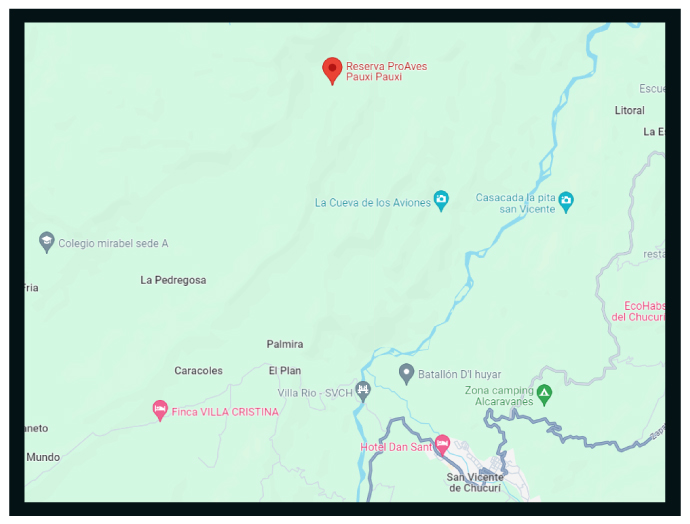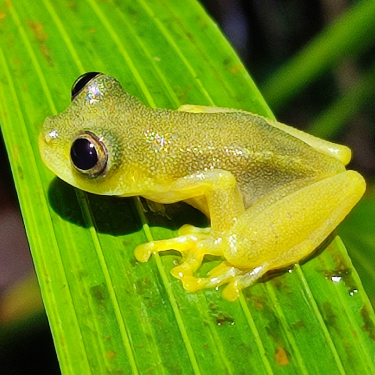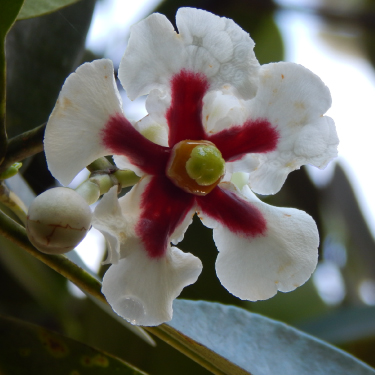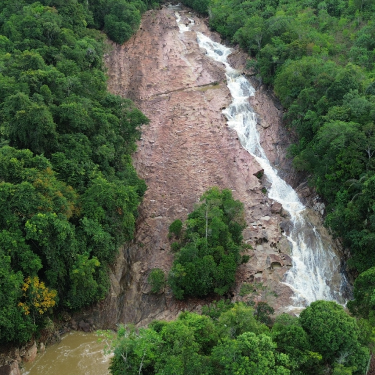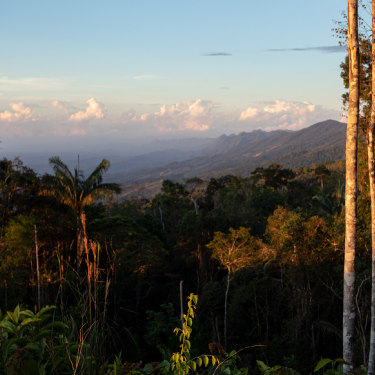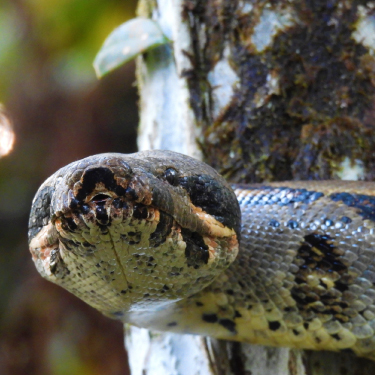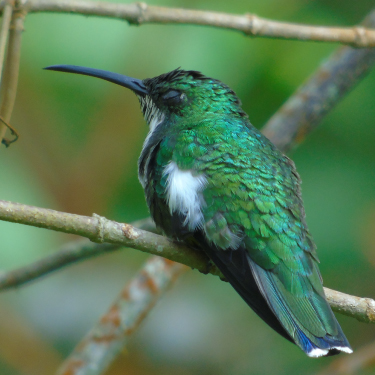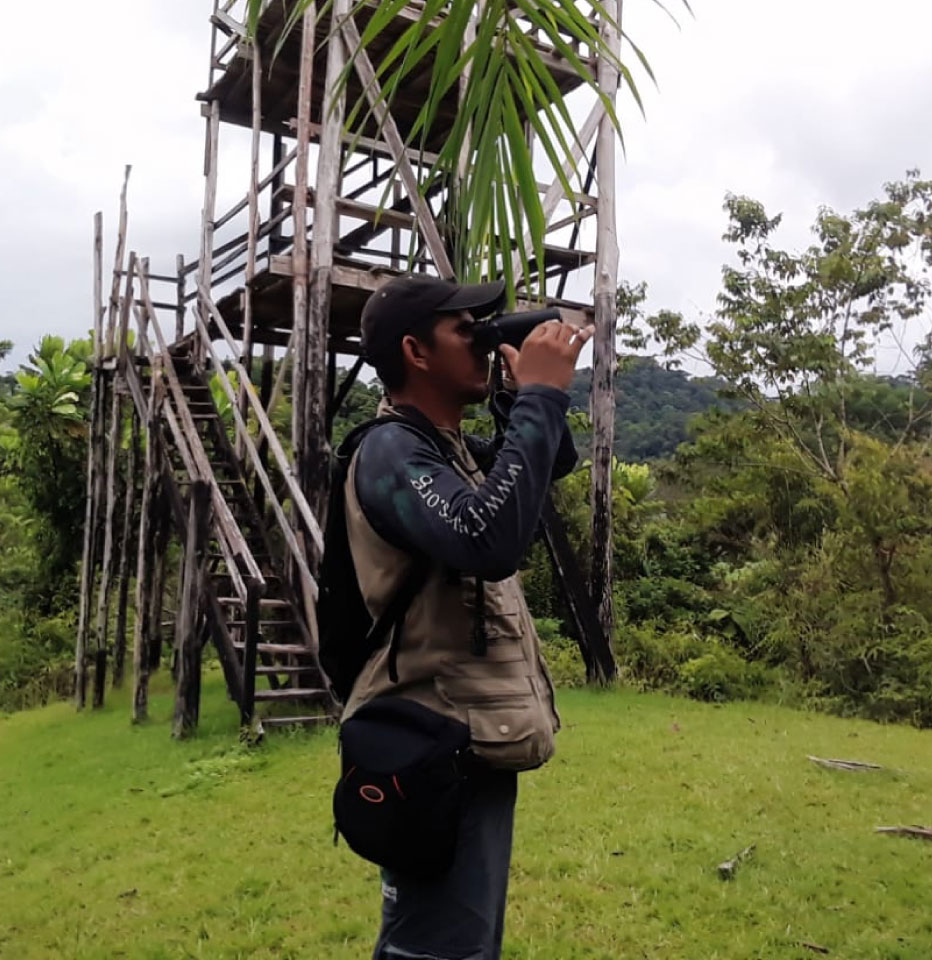
Fundación ProAves – por la conservación en el país de las aves







DATE OF ESTABLISHMENT:
2008

ECOSYSTEM:
Andean forests

PLANT FORMATIONS:
Tropical humid forest, forest very humid premontane

TEMPERATURE:
27.8 °C

WEATHER:
Warm humid, Temperate humid, temperate half damp

ALTITUDINAL RANGE:
Between 600 and 1,500 meters above sea level
KEY SPECIES
In this place there have been recorded about
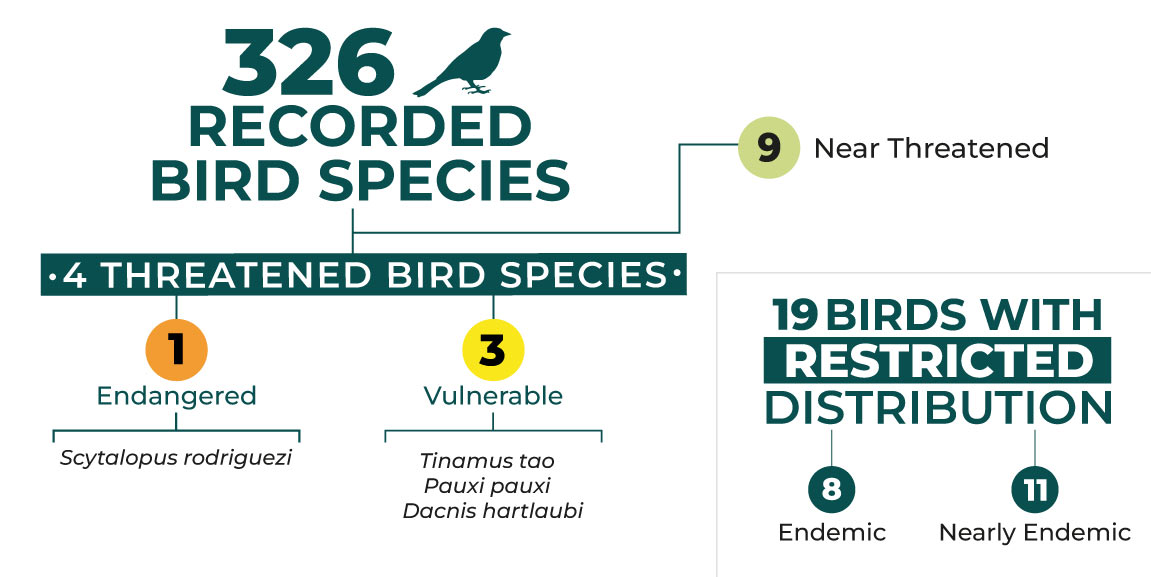
In this place there have been recorded about
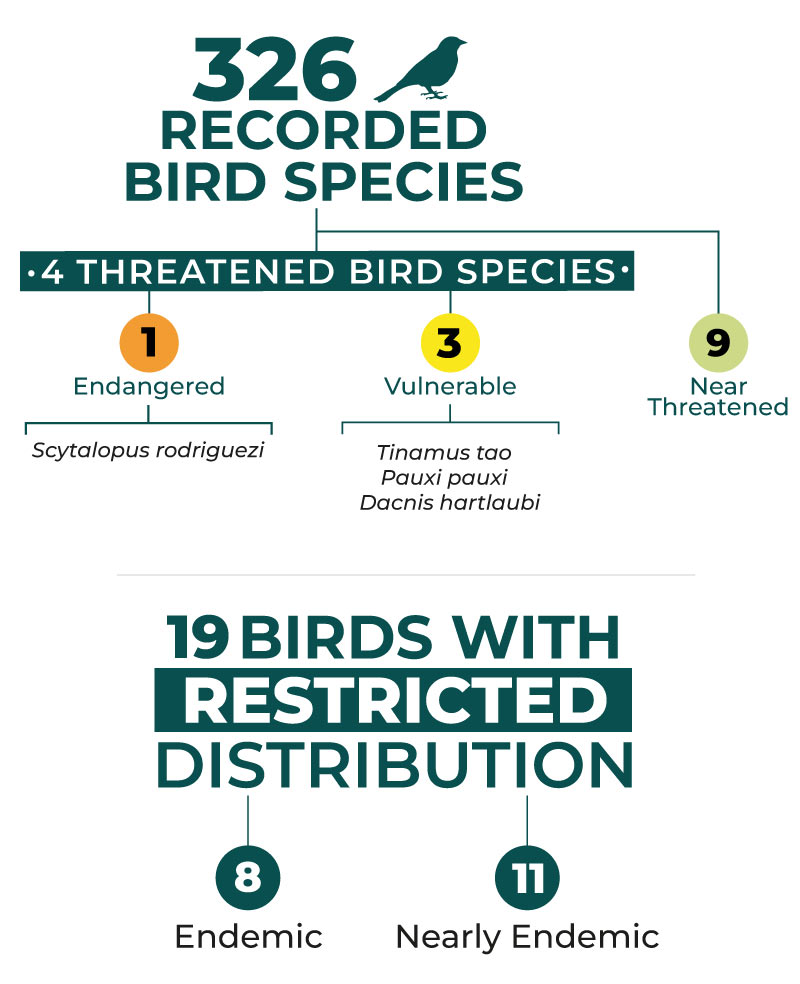
LOCATION
It is located on Cerro la Paz, in the Eastern Cordillera of the Colombian Andes, in the municipalities of Betulia and San Vicente de Chucurí, department of Santander; one and a half hours from the urban area of the municipality of San Vicente de Chucurí and two and a half hours from the city of Bucaramanga.

Among the most important birds of the Reserve are the Stone-crested Curassow (Pauxi pauxi), the Amazilia
Chestnut-crested Parrot (Amazilia castaneiventris), the Yellow-faced Parakeet (Pionopsitta pyrilia), the White-backed Bull (Capito hypoleucus), the Ash Bean (Habia gutturalis) and the Cerulean Warbler (Setophaga cerulea), among others.
Likewise, the forests of the Reserve have a high diversity of mammals, among which are the Bear.
of Spectacles (Tremarctos ornatus), tatabros, borugos, ocelots, monkeys, squirrels, armadillos, tamandúas (anteater),
deer and foxes.
The most predominant flora is oil maria, abarco, tagua, strawberry tree, guacharacos and puntes.
PHOTOGRAPHIC RECORD
IN THE PROAVES PAUXI PAUXI RESERVE, YOU CAN ALSO
Avistar las aves
y vida silvestre de la zona.
Disfrutar del hermoso atardecer
desde el Río Guaviare.
Recorrer en lancha el Río Guaviare
y divisar aves playeras
Caminar
por los senderos internos
Fotografiar la fauna
y flora silvestre
Previous slide
Next slide
We recommend a minimum stay of 2-3 nights to enjoy the activities and variety of wildlife.
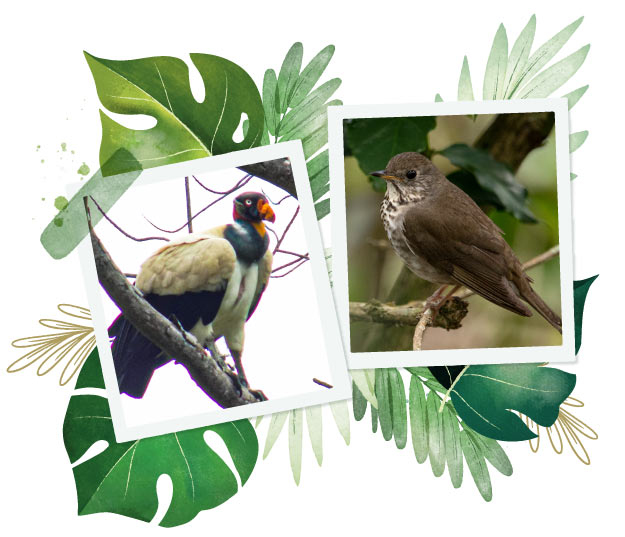
also, you will have access to:
- Internet in common areas, which may be intermittent. Take advantage of your stay in our Reserve to connect with nature!
- Water station, coffee, and tea
- Visitor trails and research activities
- Rest areas that allow you to flow with the magic of this wonderful place
Remember:
Our reservation rates do not include extra services such as food or transportation; any of these will have an additional cost and must be requested in advance via WhatsApp: +57 323 434 34 87
- As part of our policies for the care and conservation of our species, we are not pet friendly. We invite you to leave your pets in a safe place.
PLEASE CONSIDER THE FOLLOWING RECOMMENDATIONS:
RESERVATION
Make your reservation 24 hours in advance.
Walk-in reservations are not guaranteed and are dependent on current availability.
CHECK IN AND CHECK OUT
The ProAves Reserve opens at 6:00 a.m. and closes at 8:00 p.m.
Time of entry to your room: From 3:00 p.m. and time of departure from your room: Maximum at 10:00 a.m.
RESERVATION POLICIES
You can change the dates of the reservation, as long as there is availability.
Changes must be requested in writing and 15 days in advance. No refund is made for cancellation.
MEALS
Inform us of any health problems, allergies, or food requirements.
We will offer you a special menu according to your diet.
DO NOT COLLECT
Please, respect the natural resources of the Nature Reserve. The collection of any biological material is not allowed.
TRANSPORT
It’s necessary to travel in a 4×4 vehicle adapted to handle the conditions of some sections of the road.
CLOTHING
Remember that the climate in Colombia can be very unpredictable! We recommend you bring suitable walking shoes, a rain jacket, long-sleeved clothing, a sun hat, and sunscreen.
FLASHLIGHT
In the Natural Reserve there may be power outages, so bring a flashlight and enjoy connecting with nature without the distraction of modern technology.
MOSQUITOES
You do not need a yellow fever vaccine. However, we recommend using repellent since being in contact with nature there may be mosquitoes.
FORBIDDEN TO ENTER ALCOHOL
The entry of alcoholic beverages into the Nature Reserve is forbidden.
INTERNAL TRAILS
Follow the instructions of the Nature Reserve staff and stay on the established trails.
SUSTAINABILITY & CONSERVATION
AT PAUXI PAUXI
Esta área de conservación de la Fundación ProAves fue creada en el 2013 con el objetivo de proteger y conservar el hábitat de las especies más amenazadas de la región.
La Reserva Natural presenta una gran densidad de especies con facilidad de observación, por lo que es de gran interés para la conservación. Allíhabitan 364 especies de aves, entre las que se destacan: Picumnus pumilus, Touit huetii, Spizaetus ornatus, Oressochen jubatus, y Lophornis chalybeus, Mitu tomentosum, Hylopezus macularius, Dromococcyx phasianellus, Lathrotriccus euleri y Calidris minutilla.
Los bosques de la Reserva ProAves El Jaguar presentan una alta diversidad de mamíferos, entre los que se encuentran: Inia geoffrensis, Tapirus terrestris, Pteronura brasiliensis, Myrmecophaga tridactyla, Hydrochoerus hydrochaeris, Cuniculus paca y Panthera onca, entre otros.
Está conformada por bosque de la galería y ripario, sabanas, Morichales, zonas pantanosas, Lagunas, lagos y ciénagas naturales, Bosque Denso Alto de Tierra Firme, Vegetación transformada (Pastos enmalezados), Bosque Denso Bajo de Tierra Firme y Bosque Denso Alto Inundable Heterogéneo: las familias mejor representadas en número de especies son Mimosaceae, Moraceae, Melastomataceae, Lauraceae, Fabaceae, Euphorbiaceae, Rubiaceae, Burseraceae, Sapotaceae, y Myrtaceae. Las especies identificadas al momento son las siguientes: hacha o costillo (Aspidosperma excelsum), asaí (Euterpe precatoria), barrigona (Iriartea deltoidea), canangucha (Mauritia flexuosa), escalera de mono (Bauhinia guianensis) y el carguero rebalsero (Eschweilera amazonica), guacamayo (Apuleia leiocarpa) tres tablas (Dialium guianense), algarrobo (Hymenaea oblongifolia), cachicamo (Calophyllum brasiliense), macano (Terminalia amazonia), fariñero (Clathrotropis macrocarpa), sasafrás
(Ocotea cymbarum), cedro achapo (Cedrelinga cateniformis), lechoso (Pseudolmedia laevigata), lanoso (Pseudolmedia laevis) y milpo o flor morado (Erisma uncinatum) y chaparro (Curatella americana).
LATEST NEWS


